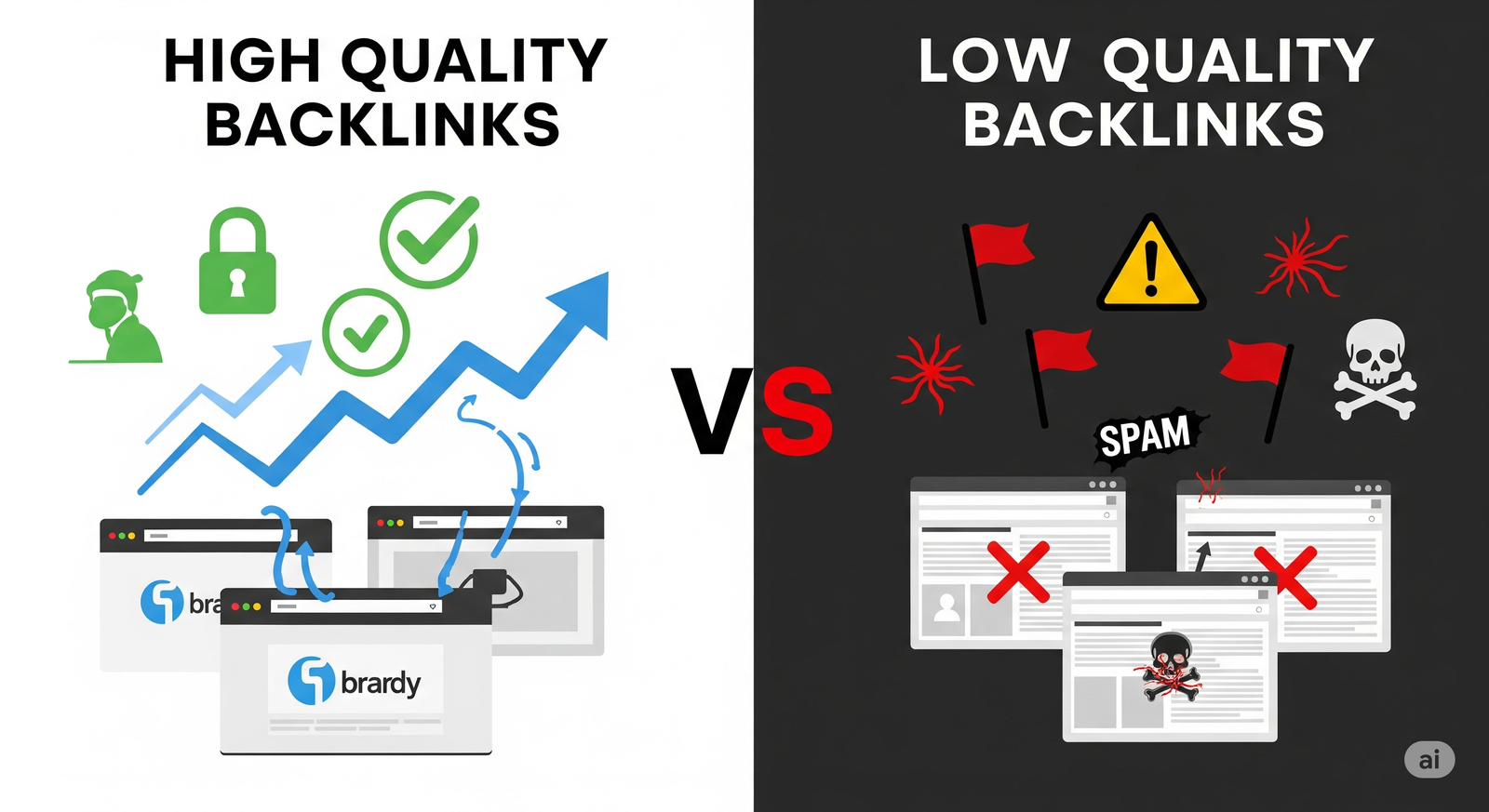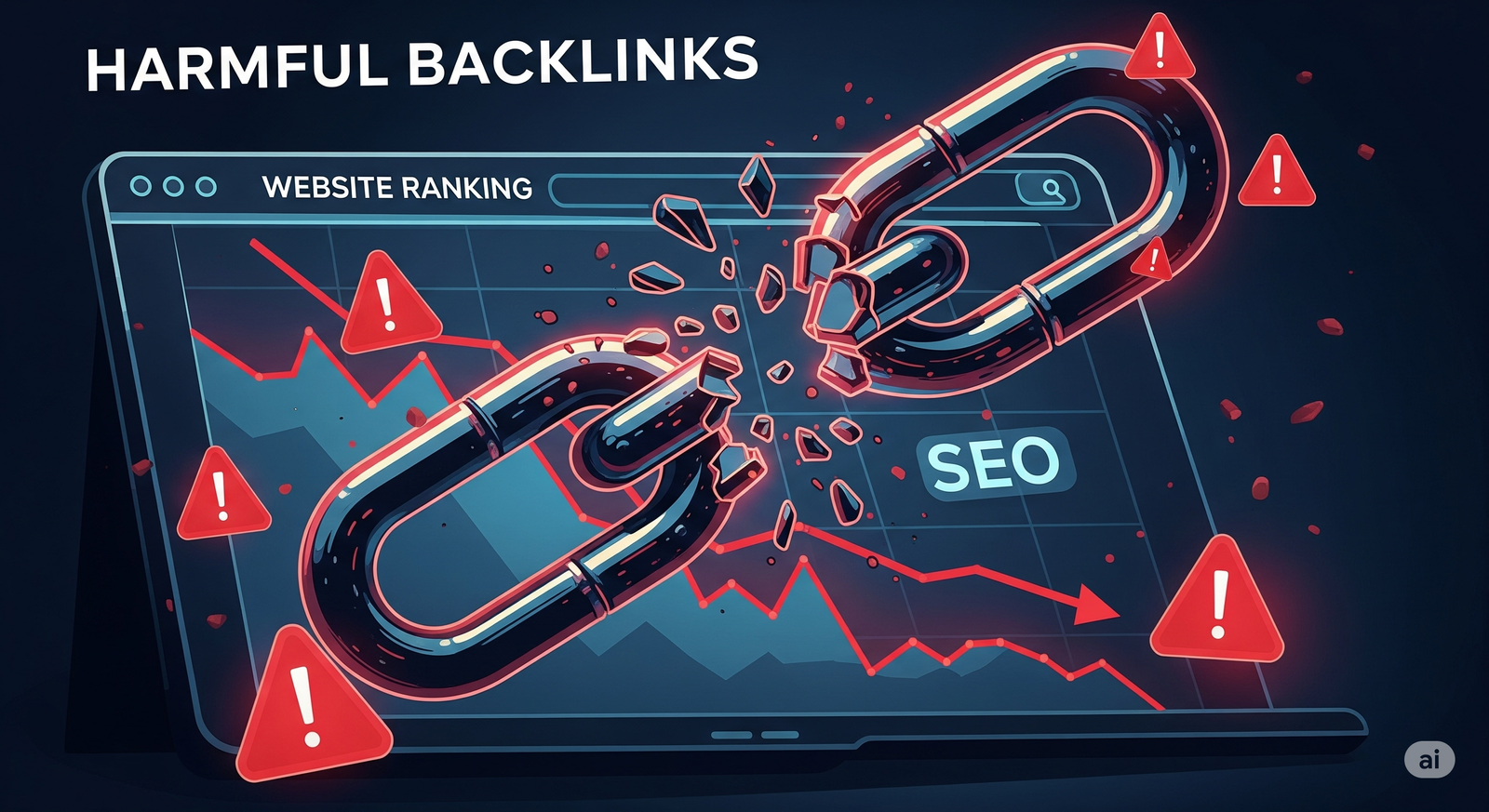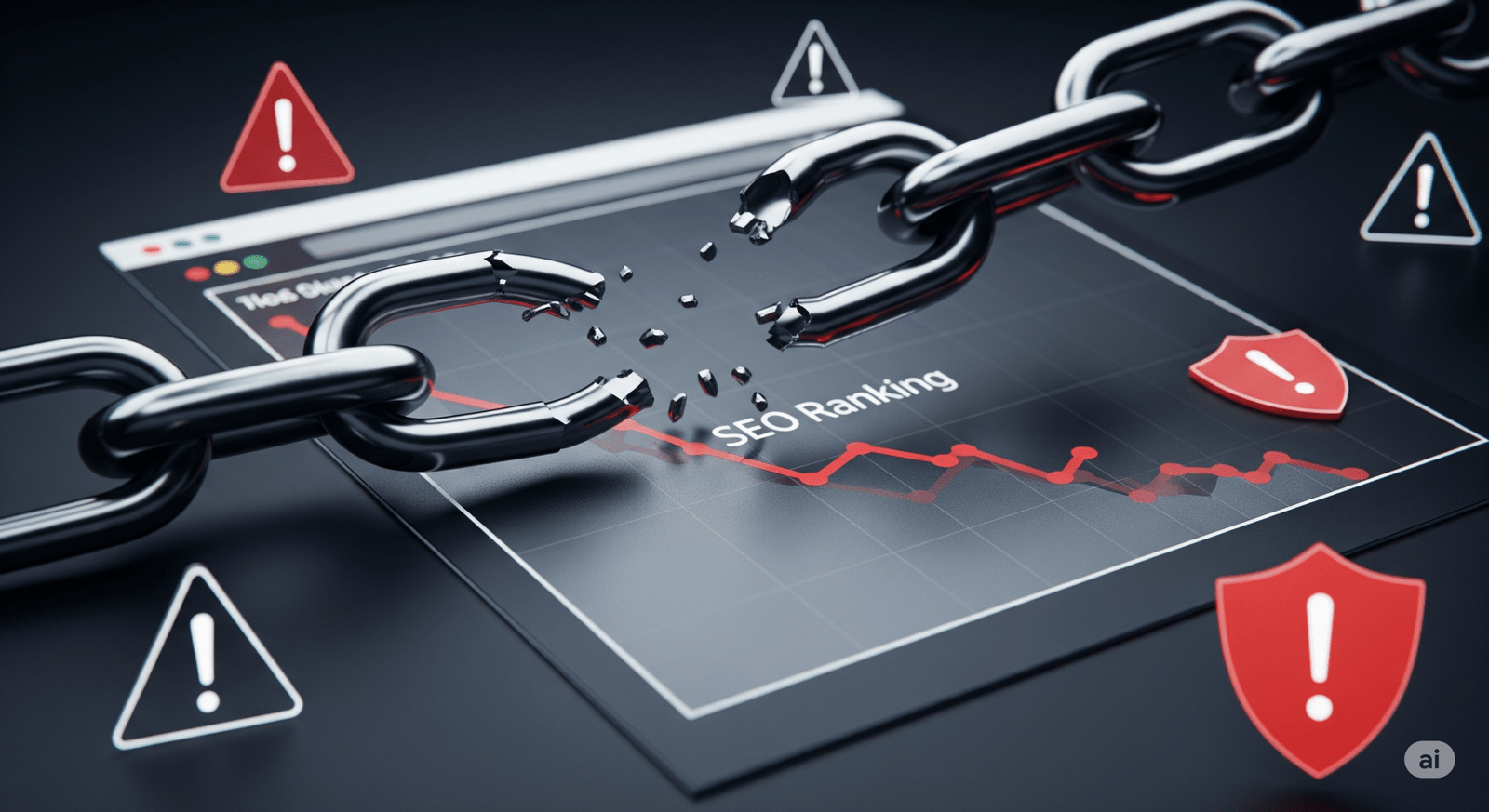Introduction: Not All Backlinks Are Good
In the SEO world, backlinks are often seen as the golden ticket to higher rankings. But here’s the truth: not all backlinks help—some can actually hurt your website. In 2025, with Google’s algorithms becoming smarter, the risk of low-quality backlinks is greater than ever. Let’s break down what they are, why they’re dangerous, and how to deal with them.

What Are Low-Quality Backlinks?
Low-quality backlinks are links from:
- Spammy or unrelated websites
- Link farms or PBNs (Private Blog Networks)
- Sites with little to no traffic or authority
- Irrelevant directories and comment spam
They lack relevance, authority, and context—three key signals Google looks at when evaluating backlinks.
Risks of Low-Quality Backlinks
1. Google Penalties
Backlinks from suspicious sources can lead to:
- Manual action penalties
- Drop in search engine rankings
- Complete removal from Google’s index
2. Damaged Reputation
Being associated with untrustworthy websites can hurt your:
- Brand credibility
- Trust with users and customers
3. Wasted SEO Budget
Buying cheap backlinks or using black-hat services often leads to:
- No long-term SEO value
- Paying for links that get disavowed later
4. Algorithmic Devaluation
Even if you’re not penalized directly, Google’s algorithms may:
- Ignore bad links
- Suppress your domain’s authority over time
How to Identify Bad Backlinks
- Check domain authority (DA/DR) using tools like Ahrefs or Moz
- Look for spammy anchor text or keyword stuffing
- Analyze referral traffic—zero visits is a red flag
- Scan for links from non-indexed or unrelated sites
💡 Tip: Regularly audit your backlinks using tools like Google Search Console, Semrush, or Ahrefs.
What to Do If You Have Low-Quality Backlinks
✅ 1. Disavow Toxic Links
Use Google’s Disavow Tool to tell search engines to ignore harmful links.
✅ 2. Remove Manually
Reach out to webmasters and request link removal, especially if they violate Google’s guidelines.
✅ 3. Build High-Quality Links
Replace toxic links with:
- Guest posts on reputable sites
- Natural backlinks from PR or news coverage
- Relevant industry directories
Comparison Chart: Good vs. Bad Backlinks
| Feature | High-Quality Backlink | Low-Quality Backlink |
|---|---|---|
| Relevance | Related to your niche | Unrelated topics |
| Source Authority | High DA/DR website | Spammy, low-trust domains |
| Traffic | Drives real users | Little to no traffic |
| Anchor Text | Natural and varied | Over-optimized or spammy keywords |
| SEO Impact | Boosts ranking & trust | Risk of penalty or devaluation |
Final Thoughts
Low-quality backlinks can do more harm than good. In 2025, Google’s AI-based spam filters are razor-sharp. The focus must be on quality, not quantity. Backlinks should come from trusted, relevant, and user-friendly websites.

Call to Action
Worried about bad backlinks dragging your rankings down?
👉 Visit jaininfosoft.com to get a free SEO backlink audit and expert advice on cleaning up your profile and building authority the right way.




